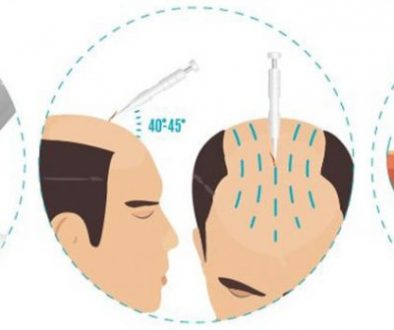Why are scalp lifts, flaps and reductions a bad idea?
Why did scalp lifts, flaps and reductions cause so many hair transplant repair patients?
 In answer to your question about how the previous use of flaps, scalp reductions, and scalp lifts were harmful to the patient’s scalp, there are several key issues.
In answer to your question about how the previous use of flaps, scalp reductions, and scalp lifts were harmful to the patient’s scalp, there are several key issues.
Regarding scalp lifts, in order to lift it up as high as most hair transplant patients requested, it was usually necessary to cut the occipital arteries and nerves in the back of the head in order to free the scalp up. Obviously, after the scalp is all undermined by the surgeon doing a scalp lift, the bald scalp on top is largely excised away, which is the whole purpose of the procedure, namely to reduce the bald area and move hair up there in its place. All of these scalp procedures, which I listed above, thin out the layers of the scalp, which puts a great strain on the arterial blood supply to the scalp. Probably the most important negative regarding these procedures is that there is a thing called “stretch back” that occurs. What this means is that I may reduce the side-to-side distance of bald scalp on top from 12 cm wide down to 7cm wide, and the photos right after the procedure look wonderful and almost miraculous. However, when the patient comes back in 6 months, the distance across will probably be around 9.5cm, which makes the accomplishment on top a lot less.
Scalp flaps are procedures which take a long strip of scalp and it is left attached up near the front upper temple area, swung around and then sewed into place in an area cleared out near the hairline. It uses up too much precious donor hair and puts it in a relatively small area, where instead that amount of donor hair could be cut up into several thousand small grafts and help cover a much larger area. Also, where the flap came from at the side and back of the scalp leaves a fairly wide scar, since the flap is much wider than the typical donor strip, which can be brought together with minimal detection.
The other negative on scalp lifts is the large bare area of scalp that now is created above the ears and just behind them. This is obvious in the photos above of my patient. Another big, big negative of all these procedures, is that after you complete them and then want to transplant the bald area that remains, the survival of the grafts is not nearly as good as when they are planted into full thickness scalp that has not been stretched out.
I hope the above is helpful.
Written by,
Dr. Beehner– Member of the Coalition of Independent Hair Restoration Physicians and Recommended on the Hair Transplant Network
Published by,
Melvin, Editorial Assistant and Forum Co-Moderator for the Hair Transplant Network, the Coalition Hair Loss Learning Center, and the Hair Loss Q & A Blog.
To share ideas with other hair loss sufferers visit our Hair Restoration Discussion Forum.



